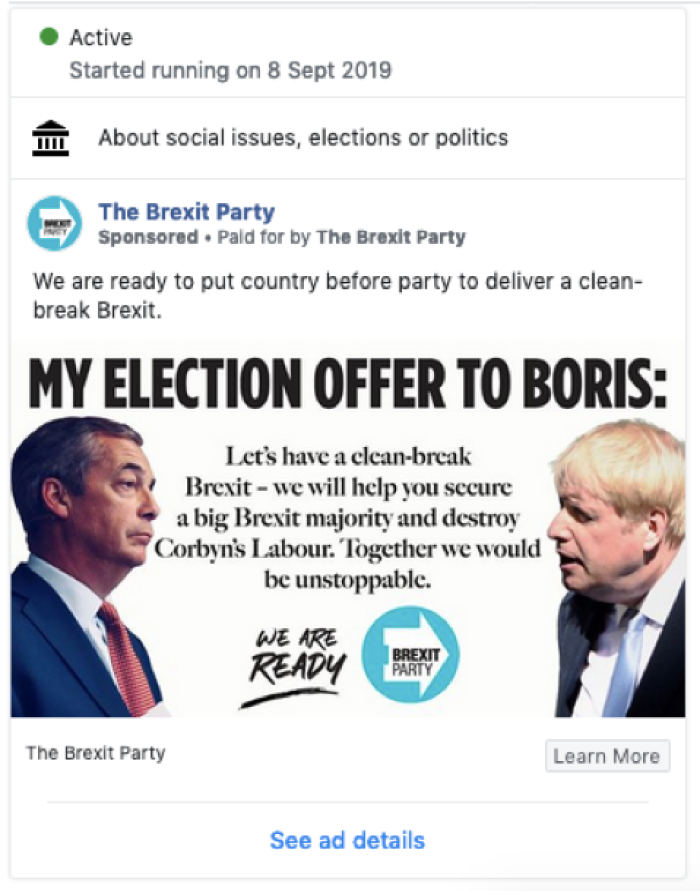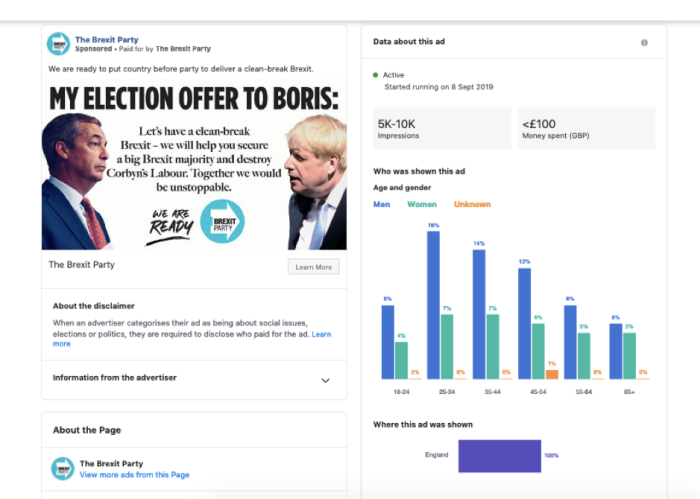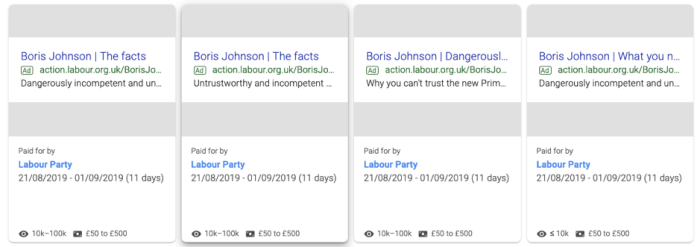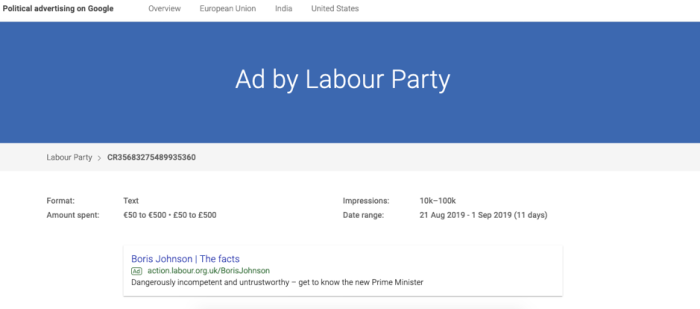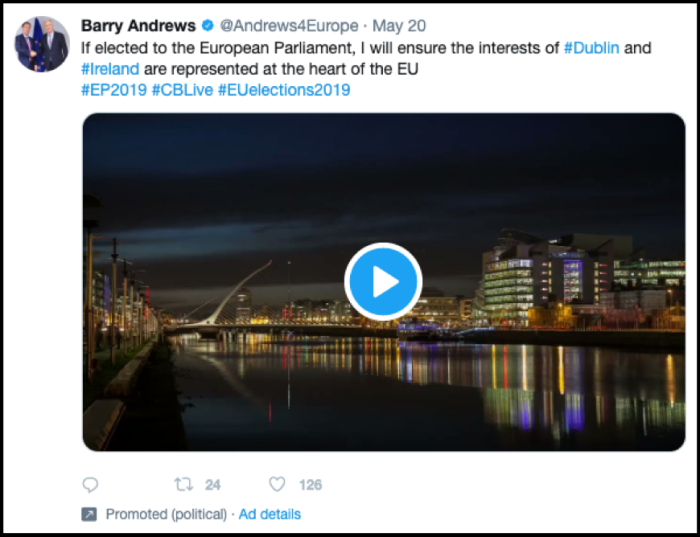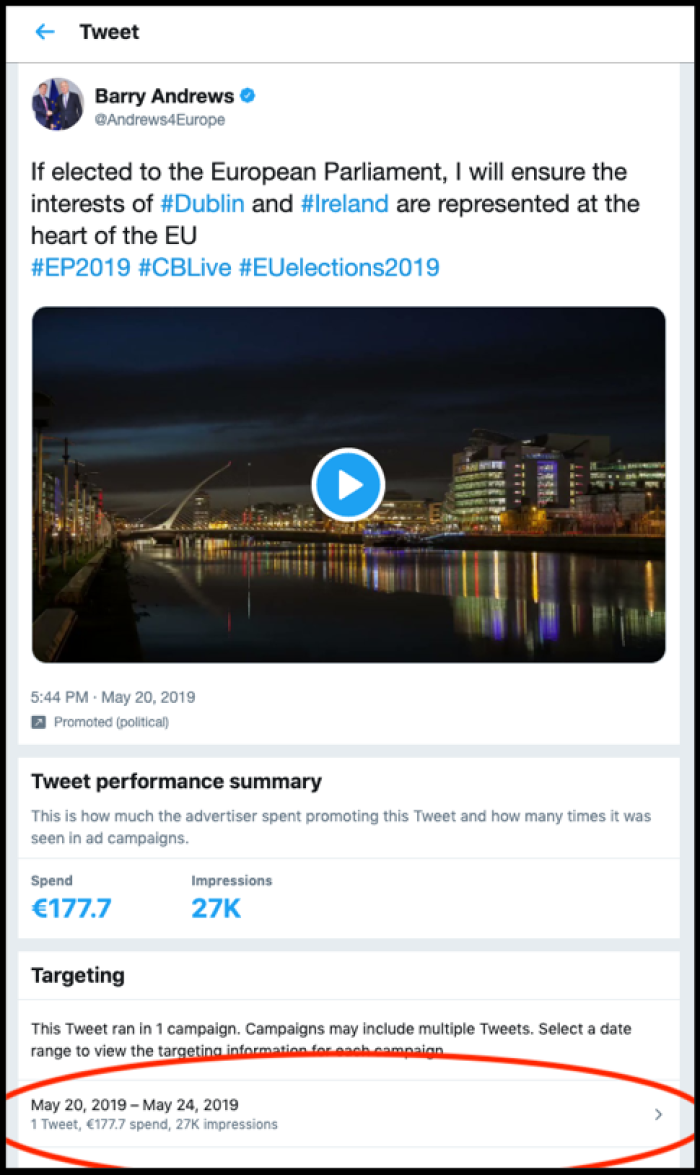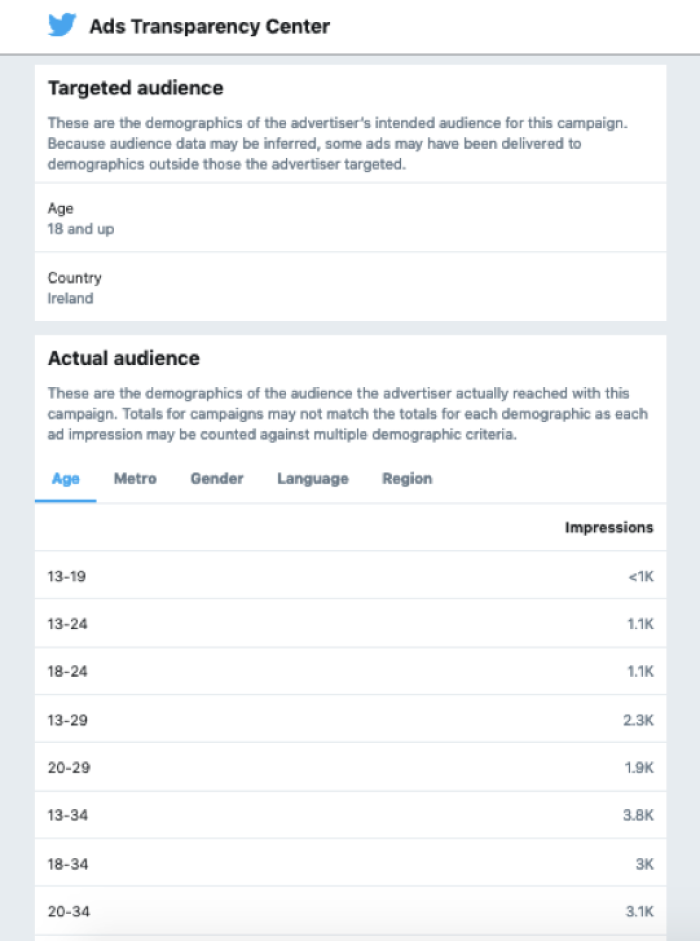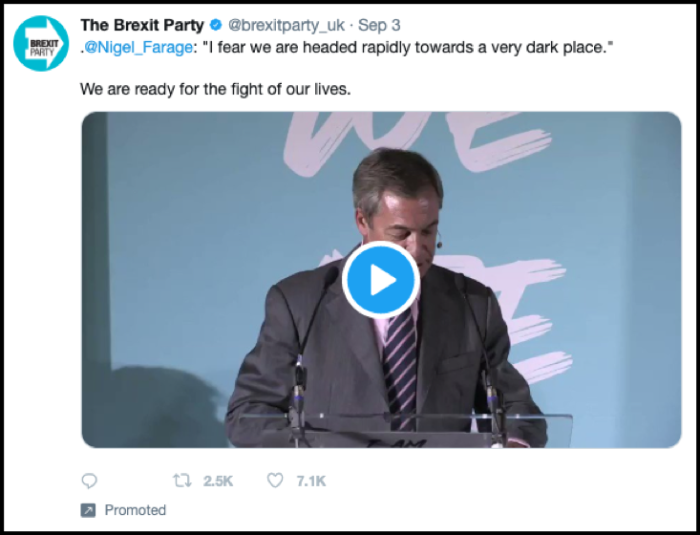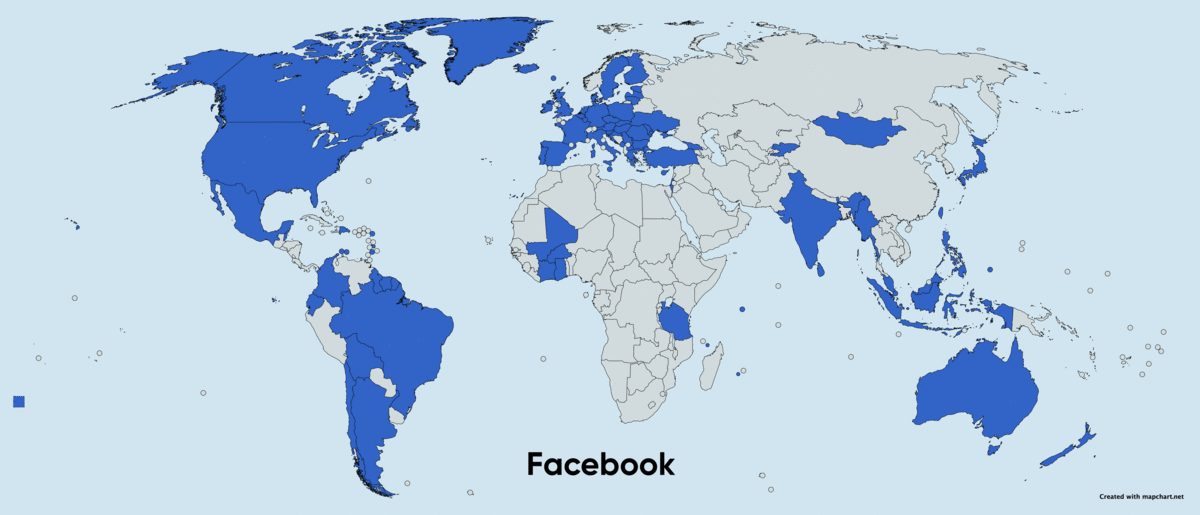How difficult is it to understand why you’re seeing a political ad on social media?

We found this image here.
Using Facebook, Google, and Twitter’s ad libraries, PI has tried to understand how political ads are targeted in the UK. This information – which should be very clear on political ads – is instead being squirreled away under multiple clicks and confusing headings.
Importantly, in most countries around the world, users cannot understand why they’re being targeted with political ads on these platforms at all. This is because Facebook, Google, and Twitter have taken the deliberate decision to provide some of their users with increased transparency and some of their users with zilch. PI is advocating for 1) platforms to give all users heightened ad transparency and 2) for transparency into targeting and funding of ads to be meaningful.
Here’s a few examples of ads that have run or are running in the UK at the moment. We’ve aimed to provide examples from across the political spectrum.
Facebook’s Ad Library provides little information about how political and political issue ads are targeted. It takes navigating to two pages to finally land on the page with targeting information, which is very basic and includes only the ad’s actual audience (instead of the advertiser’s intended audience), a general break down by gender and location, a range of how many impressions the ad made, and a range of how much was spent on the ad.
Step 1: You see an ad. Click “See ad details”.
Step 2: This takes you to an information page about the ad and advertiser, with the general targeting information.
Google’s Ad Library provides less targeting information than Facebook’s Library. Google archives election ads, which are ads for political organisations, political parties, political issue advocacy or fundraising, and individual candidates and politicians, in India, EU member states including the UK, and the US.
When searching ads from 31 August – 12 September 2019, ads appear from the UK's Labour Party, the Partidul National Liberal party in Romania, and the Irish Fianna Fail party. The ads state that they were “Paid for by” Partidul National Liberal, the Labour Party, or Fianna Fail respectively.
Step 1: You see an ad. Click on the ad.
Step 2: Here is the information Google makes available. In the EU, India, and US, Google provide broad range data about ad spend [for example <$10K] – for other countries it appears that Google does not even provide this level of transparency. Google does not appear to provide sponsor contact information.
There are other examples in the archive with amount spent ranges such as 500€ to 25,000€ and the impression data ranges from 1 million to 10 million people, which provides no meaningful transparency into the intended or actual audience of the ad.
Twitter’s Ad Transparency Centre archives election-related ads (ads related to and that advocate for or against a candidate or political party, ads that appeal directly for votes in an election, referendum, or ballot measure, or ads that solicit financial support for an election, referendum, or ballot measure – although this definition differs by country!) and promoted tweets (commercial ads). Within Promoted tweets are ads that by normal standards would be considered “political” but because they are not tied to an election, they seem to not be considered political ads by Twitter. Promoted tweets are archived for seven days only, which is problematic because it becomes impossible to track political issue ads over time or to understand what political actors are buying ads and how they are targeting users. It’s not clear how long election-related ads are archived.
Twitter does not seem to provide any targeting information for Promoted ads in its Ad Library, including ads that by normal standards would be considered political. The election Ad Library provides some information about this.
Election Ad Library
Step 1: You see an ad and click “Ad details”.
Click 2: You click on the dates the ads run under “Targeting”.
Promoted tweets
Click 1: Via Twitter’s Ad Library, it does not seem possible to view any information beyond what is seen in the screenshot below. For example, the below ad [accessed 13 September 2019] is being run by a political party but it appears it will only be archived for a limited time and provides very little insight into how it was targeted. Overtime ads like this will be deleted and lost.
What should be done?
It is problematic that companies do not provide users with complete information about why they are targeted with ads, particularly political ads. Given the granularity with which advertisers are able to target users on Facebook, Google, and Twitter, the companies must provide much more information about why users are seeing an ad.
This information should include at least: 1) the source of the data used to target ads, 2) the target audience of the advertiser and actual audience of the advertiser, 3) information about if the ad was micro-targeted [more details on the kind of information needed to make transparency meaningful here].
